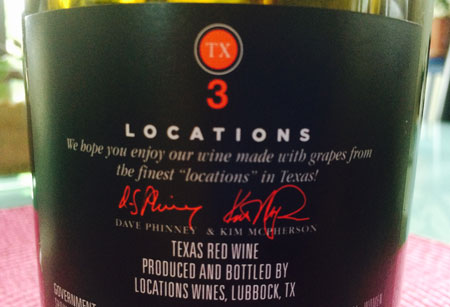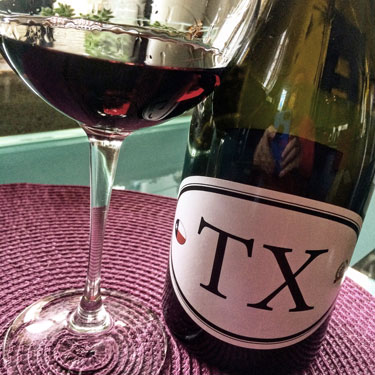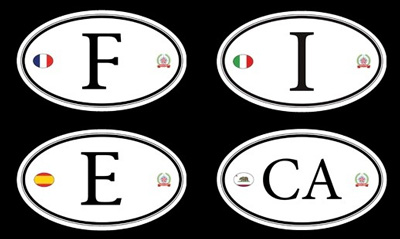TX Locations Wine: A worthy wine as big as the state it represents
Dave Phinney’s idea is simple, complicated and a great deal of fun, all rolled into one. As you can see below harvested from the Locations Wine website:
The Simple: Make the best possible wine from a given country or location.
The Complex: Going out and tracking down the vineyards, which are capable of delivering the quality of wine needed.
The Fun: Traveling the world to visit incredible sites and meet amazing people that challenge each other to make the best wine possible.
Up until last week, there were five Locations wines each designated by the country’s call letter(s), France (F), Italy (I), Spain (E – for España), California (Ca) and Argentina (Ar). Another Locations wine from Corsica is designated by simply the words CORSE. Well, mid-last week that changed and changed for the better of Texas.
That day, I was doing some “recreational” shopping at Central Market on Westheimer in Houston. It was about 10 am when I walked in to the wine section and found a stack of boxes emblazoned in large black letters on a white & black background that simply read: TX.
I stopped by the desk to asked a few questions and got these somewhat surprising replies:
- Is this Texas wine? Answer: I think so.
- Who made it? Answer: I don’t know.
- What grapes are in it? Answer: Beats me.
- How much does it cost? Answer: I don’t know that either.
OK, well how in the God’s great world are you going to sell me a bottle?
Then, I got the justification in the following response:
“We just opened the boxes and haven’t even got the prices or info yet.”
So, we did what any normal person would do in a market wine section these days… We Googled.
But, you know what we found? Absolutely nothing.
The website at www.locationswine.com didn’t even have TX listed. Luckily, the bottle already had a SKU number in the Central Market system and we were able to find the price. It was somewhere just south of $25, I believe. So I bought it.
After inspecting the bottle, the maker was obvious and very familiar. Right next to Dave Phinney’s name was that of Kim McPherson (of McPherson Cellars fame), the fabulous winemaker of Lubbock, TX.
After getting home and in my house for all of two minutes with groceries still on the counter, I popped the cork and poured a glass. In seconds thereafter I answered, at least generically question number three (above): What grape were in this wine? Mediterranean and likely Rhone varieties were screaming out of the glass.
Luckily, Jessica Dupuy did a great job in getting the scoop on this wine and the Phinney/McPherson collaboration in her Texas Monthly online review (Texas Monthly). And the grapes? She reported:
“Mourvèdre, Carignan, Cinsaut, Syrah and Grenache (all Mediterranean grapes of the Rhone valley) making up about 88 percent of the wine of Texas appellation. To complete the collaboration, the remaining 12 percent is from Phinney’s California stock with Bordeaux reds and Petite Sirah to add rich color and a little more alcohol.”
So based on her report, I could also tell that the wine is legally (per federal TTB regulations) allowed to be considered Texas appellation (at least 75% Texas wine is the requirement). Also, the reverse-side label (see above) calls it “Texas Red Wine” as a verification of this.

Another interesting aspect of the wine, is that it is “vintage-less” with no vintage date indicated on the label. My take from that is in order to get enough wine with Texas appellation to fulfill its mandate for national distribution, McPherson had to look everywhere…even in tanks and barrels with wines from possibly newer and older vintages. [VT – this is pure speculation on my part] If so, all I can say about this is “It’s about time”.
Hooray for the multi-vintage, multi-varietal business model for Texas. It is a tried and true way to produce consistent quality wines in regions that are challenged (usually by the weather like Texas) putting together back-to-back vintage years. Champagne has claim to its fame based on this business model (blending of grapes and vintages that varies every year) and it works. Why not Texas? For a place like Texas where people joke “Texas doesn’t have weather. It just has extremes!”, this sound like a great approach that could just make Texas an internationally recognized wine region.
Now, what you’ve probably been waiting for…the wine.
TX is deep purple-red, medium-plus body and is a heady wine. It’s 15.5% alcohol pulls a lot of fruit up into the vapors held in the glass. My recommendation is to start with a very large wine glass or you will be missing half the experience of drinking TX. This wine has muster gained from a mélange of red and black fruit characteristics, supported by dusty earth, minerals, aromatic spices including a nip black pepper on both the nose and palate.
TX Locations is a worthy wine that’s worthy of carrying the TX brand. It’s a wine as big as the state that is represents.


